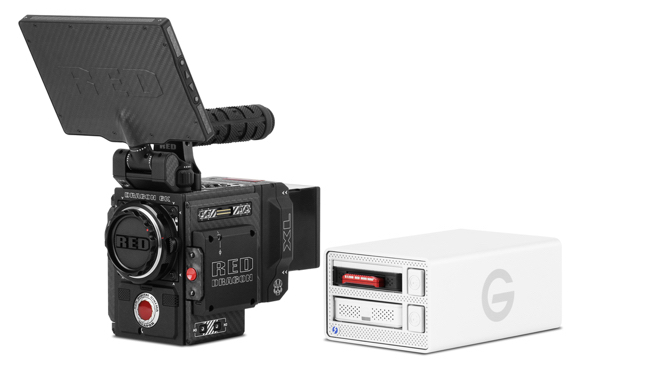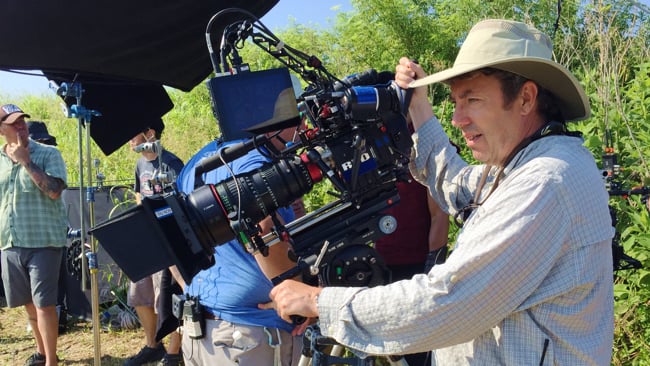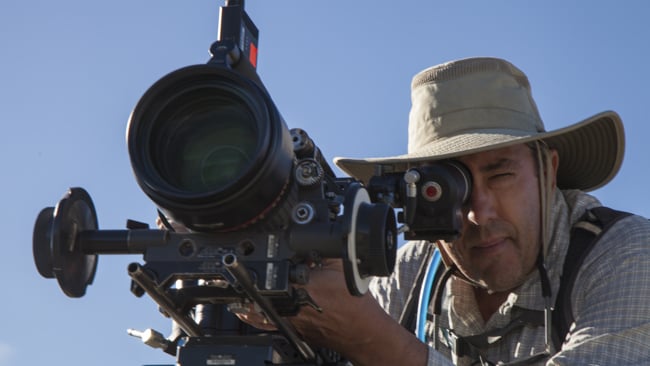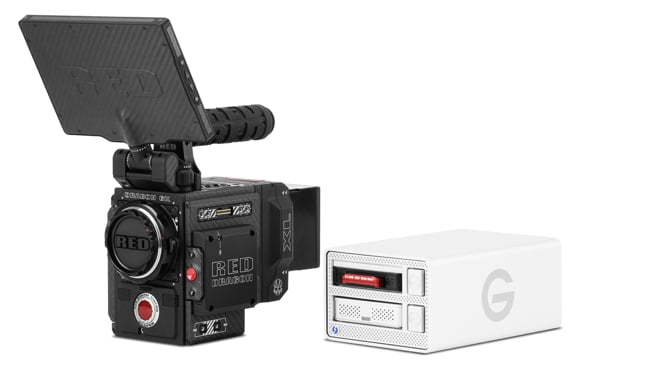

RedShark Replay: We asked cinematographer Shane Hurlbut, ASC, what it’s like to work in higher-than 4K resolutions using RED cameras and G-Technology storage.
RedShark: What are the main artistic reasons for working in higher-than 4K resolutions?
Flexibility in post production is a big factor if the project calls for it but the overall image quality is what has attracted me to the platform of shooting in greater than 4K on the RED Weapon. There is a quality to the image that comes alive at the higher resolution that gets captured in camera that plays well with the color space that the 6K RED Dragon sensor offers. I think as we have begun to move quickly from shooting on film to digital, preserving an image that has a high resolution quality for theatrical release is extremely important. As we move further into bringing higher resolution quality to home viewing and with the release of 4K television, we want to be prepared for what the audience expects to see as the technology grows. It preserves our art for a long time and allows us to stay ahead of what is coming in the future.
And what are the technical advantages of working in super-high resolutions?
The quality of these digital sensors provide much more than a technical advantage, but an artistic advantage as well. From a technical side, sure, we can "future proof" the quality by mastering in 4K UHD and releasing in 1080p today only to re-release our films in 4K UHD years later without having to scale the resolution where we lose quality over the image. I point out the artistic advantage because I'm able to light scenes with less light, using more natural sources if I need to, but at the same time, with the RED Weapon, I am able to light as if I am shooting film. There are very similar ratios to my lighting style and being able to bring that to life allows me to paint the picture in more ways than every before.
How do you plan a super high resolution shoot (ie how is it different from (say) a 4K one?)
Most of the time, I'm shooting in 5K to stay within the Super 35 sensor, which is what is most common these days. Having the ability to go to 6K if we need to quickly get a little wider or if we want to stabilize in post-production has become a huge advantage. In some projects, we're starting to bring in a lot more VFX, so having the added resolution makes a big difference with our VFX team, giving them a larger canvas to work with.

Shane Hurlbut, ASC
Do you think that the availability of reliable storage has kept pace with increases in resolution?
Yes. Absolutely, yes. Storage options increase everyday. I work closely with G-Tech products and they have become a standard on set for many years. What has begun to happen is every company that makes drives and has to work harder to keep up, to challenge each other to make better and more efficient products. My DITs and Producers in post-production are telling me constantly where we have been heading with the speed of the technology, without having to sacrifice reliability. We're shooting on little hard drives now, not just backing up to them. From the time we hit record on the camera to the time it's sent to the theater, it is starting to be all digital hard drives through the process and it has become incredibly safe and fast over the years.
What do you like about shooting with RED?
The color space is what I love. The RED sensor has such a soft and beautiful feel. The skin tones are just incredible. RED really knocked it out of the park with this camera. My images come alive, bringing the characters to life. It lets me feel like the camera is a character, which I feel was missing for a long time in the digital world

What makes you want to use G-Technology storage on a high-res shoot?
Speed, performance and reliability. I feel you can have all 3 of those with G-Tech products. When I know production has put aside to get the DIT a set of G-RAIDs for the project, I am not worried about losing our footage. It's like a security blanket on set. There was a long time when we first started shooting digital and drives were just becoming popular to use on set and it was a nightmare. We would lose days sometimes if we weren't careful. The wonderful thing about G-Tech is that their brand has become synonymous with reliable performance. Even if the producers don't know anything technical, they know that G-Tech drives are what the camera department wants, because they're always asked to buy them.
Thanks for the insights, Shane!
Shane Hurlbut, ASC is a world-renowned cinematographer whose films include Terminator: Salvation, Need for Speed, and, most recently, AMC’s Into the Badlands.
Find out more about RED here and G-Technology storage here.
Tags: Production



Comments